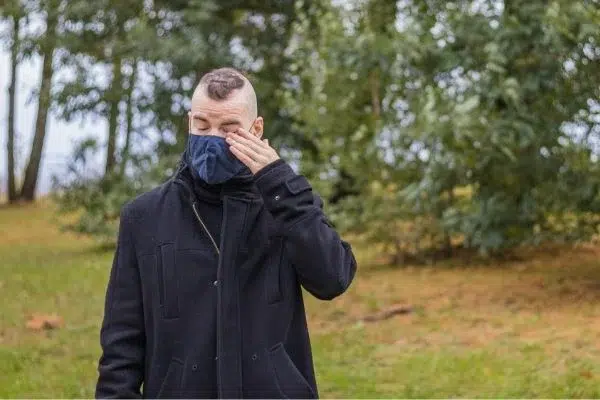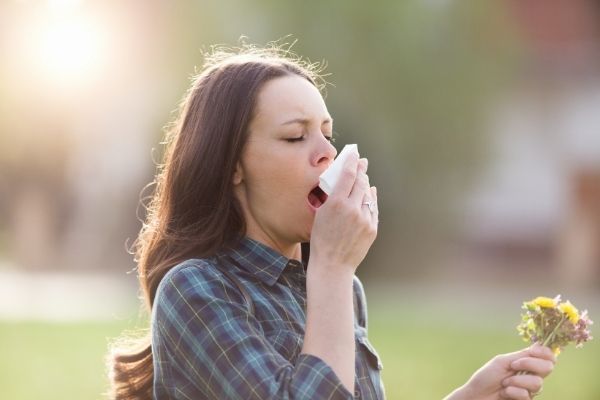The long hot summer days have turned to breezy cooler temperatures in Southern California. With the changing of seasons and cooler weather making its way into the Southern California area allergy sufferers are bracing for the impacts of the most common fall allergies. In warmer climates, allergy triggers can linger well beyond the fall with little to no extreme cold weather to put a stop to allergen spread. If you are an allergy sufferer it is important to take control and manage your allergies from the outset to prevent further discomfort and aggravation of symptoms associated with allergic rhinitis and the increased risk of conditions such as asthma.
What is a Fall Allergy?
As seasons change in different regions of the U.S., different allergens become prominent in these areas triggering reactions in allergy sufferers. These allergies are differentiated from other allergies because of their transient nature and are referred to as seasonal allergies. Unlike pet dander and other allergens that may be present year-round; seasonal allergies are aggravated by specific times of the year and environmental triggers increasing the presence of certain allergens. For allergy sufferers, spring is the season most often associated with an increase in allergic reactions, but the reality is fall can be just as disruptive and debilitating for allergy sufferers.
Why Do Allergies Worsen in the Fall?
Wind, cooler nights, and warm days create the perfect combination for pollen to travel and create havoc for allergy sufferers during the fall months in Southern California. Fall is a time that weeds thrive and the pollen created by these fall weeds can be triggers to allergy symptoms in many individuals.
Beyond pollen, the fall season is also a prime time for mold and dust to gain prominence and trigger symptoms in those sensitive to these allergens.
Most Common Types of Fall Allergies
Weed Pollen Allergies
The most common culprit of fall allergy symptoms is the pollen from Ragweed; it is estimated that up to 20% of the U.S. population has some type of allergic reaction to this allergen. However, other weeds can also be responsible for triggering reactions in allergy sufferers in the fall including sagebrush, pigweed, and wormwood. Even if you live in a particular area where a type of weed is not present, winds can help weed pollen travel for many miles making the distance from the plant of little consequence for allergy sufferers.
Dust Mites
The particles of this common allergen can accumulate during its most prominent months along your heating system in ducts and vents. It is a frequent complaint for individuals to experience significant allergic reactions when activating their home heating system during periods of colder weather. This initial process of turning on your heat pushes out the accumulation of dust in your vents throughout your home often triggering uncomfortable allergy symptoms.
Mold
When most allergy sufferers think of mold they link this allergen with hot and humid environments, however, cool fall weather and the changing of leaves is a time conducive to mold growth. As the leaves transition and fall to the ground, this accumulation promotes mold growth with the decaying of the leaves. Wind and lawn maintenance easily stirs up mold spores and allows them to travel through the air aggravating symptoms in those allergic to mold.
Symptoms Associated with Fall Allergies
Each individual’s severity of allergy symptoms is dependent on a number of factors including exposure and sensitivity to the particular allergen. What for one person may consist of nothing more than mild discomfort and a runny nose, for another person can create a disruptive pattern of symptoms and pose a serious threat to their health if they are dealing with underlying conditions. It is important to be able to identify the symptoms of fall allergies to help you get the proper care and treatment necessary to alleviate the impacts of these allergens on your day-to-day life.
Symptoms of Fall Allergies can include:
- Itchy eyes
- Nasal congestion
- Itchy throat
- Sinus pressure
- Discomfort in the Ears
- Postnasal drip
- Headaches
- Discomfort in the Chest
- Can trigger asthmatic attacks including trouble breathing or shortness of breath
- Cough
- Wheezing
- Dry skin
Get Relief for Your Fall Allergies
There are some steps you can take to mitigate the impact of fall allergens.
Limiting exposure to weed pollen allergies can reduce the severity of your symptoms in some cases but will be difficult to eliminate altogether due to the wide distribution and spread of this allergen in the fall months. If planning for an outing make sure to check your local weather forecast for pollen count and risk beforehand.
For dust and mold allergy proper cleaning and maintenance, as well as ventilation, can reduce your risk of prolonged exposure and provide some relief. Consider scheduling a cleaning of your heating system before cool weather arrives and delegating lawn care to a service provider or wearing a facial covering when cleaning leaves or maintaining your lawn.
While these tips can help you manage your allergies to some degree the most important step you can take for the effective management of your allergies is to consult with a medical professional to develop a treatment plan specific to your allergens and symptoms. It is also important to note that Southern California can present a unique situation for allergy sufferers due to our warmer climate and more subtle seasonal changes. This often translates to longer allergy seasons and many allergens that are prominent for longer durations throughout the year. This leads to prolonged discomfort for many patients and can make it difficult to manage and without a proper treatment plan.
At CV ENT Surgical Group we understand the impact that allergies can have on the daily lives of allergy sufferers. With our guidance, testing, and treatment options we can help you take control of your symptoms and improve the quality of your life even in the midst of allergy season.
Contact us to schedule an appointment to get you the relief you need for your fall allergies.


